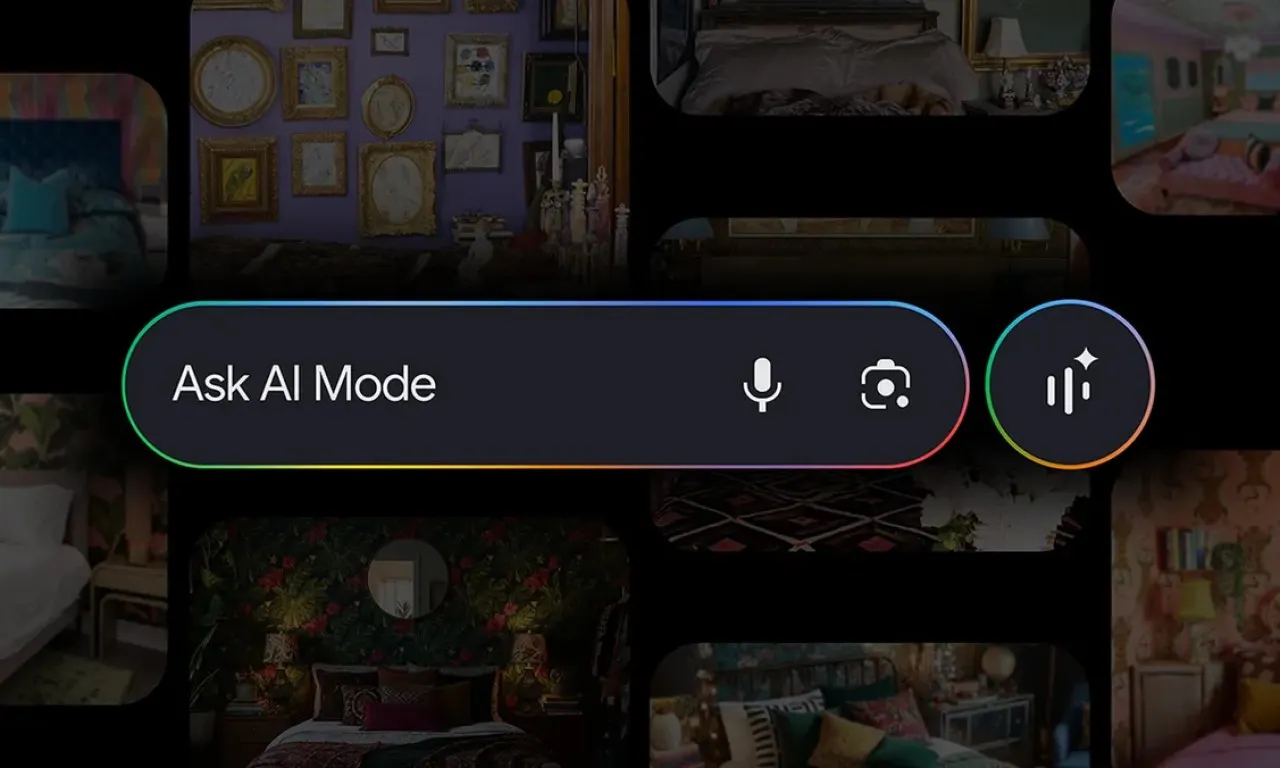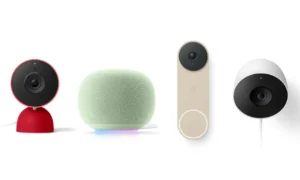Have you ever found yourself scrolling endlessly, trying to find the right words to describe something you can see perfectly in your mind? Maybe it’s a specific “vibe” for your living room, a particular style of jacket you saw someone wearing, or a piece of art that’s just… indescribable. We’ve all been there. That’s where Google’s groundbreaking AI Mode steps in, transforming your search experience from a frustrating keyword guessing game into an intuitive, visual conversation.
This isn’t just another minor update; it’s a complete reimagining of how we interact with the digital world. Forget clunky keywords and endless blue links. With the new visual capabilities in AI Mode, you can now search using a combination of images, photos, and natural language. It’s like having a conversation with a super-smart, visually-savvy personal shopper and creative assistant all rolled into one. Ready to dive in? Let’s explore how this incredible tool is set to revolutionize the way you discover, create, and shop online.
Contents
WWhat is AI Mode and Why is it a Game-Changer?
At its core, AI Mode is Google’s most powerful and advanced search experience, representing the next evolutionary leap beyond simple keyword queries. It moves beyond traditional search by using sophisticated generative AI to understand complex, multi-layered questions—the kind you’d ask a human expert. Instead of just pointing you to a list of websites and leaving the synthesis up to you, AI Mode does the heavy lifting, weaving together information from across the web to provide you with a comprehensive, easy-to-digest answer. This foundational shift makes AI Mode less of a search engine and more of a “thought partner.”
The latest update, which rolled out in September 2025, takes this a massive leap forward by integrating deeply visual and multimodal search capabilities. This is the feature that truly defines the modern AI Mode experience. It means your search query is no longer confined to text. Within AI Mode, you can now start your exploration with an image, a screenshot, or even your phone’s camera, and then refine your search with conversational language. This fusion of seeing and speaking makes the entire process feel remarkably natural and human.
Think about it. How often do words fall short? Describing a specific fabric pattern, a unique architectural style, or the exact “vibe” of a room can be nearly impossible with text alone. This is the communication gap that AI Mode was built to bridge. It leverages its advanced AI to understand the deep nuances of an image—the subtle textures, the secondary objects in the background, the overall mood and aesthetic—and connects you with results that truly match your vision. This powerful combination of visual understanding and conversational AI is precisely what makes AI Mode a true game-changer for everything from detailed online shopping to abstract creative brainstorming.
The Technology Powering the Visual Revolution in AI Mode
So, what’s the magic behind the curtain of AI Mode? This incredible experience isn’t the result of a single breakthrough but a symphony of Google’s most advanced technologies working in perfect harmony. Each component plays a critical role in making AI Mode the intuitive tool it is today.
- Gemini 2.5: The Conversational BrainAt the very heart of AI Mode is Google’s state-of-the-art AI model, Gemini 2.5. Think of it as the system’s brain. Its sophisticated multimodal and long-context language capabilities are what allow AI Mode to understand your conversational questions about an image. It can process and connect abstract ideas across both text and visuals simultaneously, maintaining the context of your conversation. This is why you can ask follow-up questions like, “Show me that chair but in a darker wood,” and AI Mode knows exactly which chair you’re referring to from the previous turn in your chat.
- Google Lens & Image Search: The Eyes of the OperationThe core visual understanding within AI Mode comes from the battle-tested technology that powers Google Lens and Image Search. For years, Google has trained these systems on literally billions of images, refining their ability to “see” and identify objects, text, and patterns with stunning accuracy. This technology has been supercharged and deeply integrated into AI Mode, acting as its “eyes” to deconstruct and comprehend every pixel of the image you provide.
- “Visual Search Fan-Out”: The Context EngineThis is a groundbreaking technique developed specifically for AI Mode. When you search with an image, the system doesn’t just look for one-to-one matches. Instead, it performs a “Visual Search Fan-Out,” where it instantly generates dozens of related text and image queries in the background. For a photo of a living room, it might simultaneously search for “mid-century modern floor lamps,” “geometric-patterned area rugs,” and “how to style a leather sofa.” This comprehensive analysis of every element allows AI Mode to understand the entire scene’s context, providing much richer, more accurate, and more serendipitous results.
- Shopping Graph: The Actionable ConnectionFor those of us who love to shop online, this is the crucial component that makes AI Mode not just an inspirational tool but an actionable one. Google’s Shopping Graph is a massive, dynamic database containing over 50 billion product listings from retailers worldwide. When you use AI Mode to circle a product in an image, it taps directly into this graph. This closes the loop from discovery to purchase by linking a visual element to real-time product availability, pricing, seller reviews, and direct purchase links, ensuring the options presented are trustworthy and ready to buy.
Together, these technologies are intricately woven together to create the seamless and powerful experience that is AI Mode. It’s a tool that feels less like a machine and more like a helpful, insightful companion, ready to explore the world with you.
How to Use AI Mode for Visual Exploration: A Practical Guide
Getting started with the visual features in AI Mode is incredibly simple and intuitive. The whole point is to make searching feel more like a natural conversation. Here’s a step-by-step look at how you can harness its power.
Starting Your Search: Text, Image, or Both?
The beauty of this new experience is its flexibility. You can kick off your discovery process in whatever way feels most natural to you.
Let’s say you’re looking to redecorate your bedroom with a “maximalist design” aesthetic.
- Start with a Conversational Question: You can simply type or speak, “Show me maximalist design inspiration for my bedroom.” Instead of just a list of blogs, AI Mode will present you with a rich tapestry of visual results—images that capture that specific vibe.
- Refine with Follow-ups: From there, the conversation begins. Maybe you see some ideas you like, but you want something a bit different. You can follow up with, “I like this, but can you show me options with darker tones and more bold prints?” The AI understands the context of your previous query and will instantly refine the results.
- Start with an Image: Alternatively, maybe you already have an image that perfectly captures your vision—a photo you saved from a magazine or a screenshot from social media. You can upload that image directly into the search. AI Mode will analyze it and find visually similar concepts, products, and ideas.
- Search Within an Image: On mobile, it gets even more granular. You can tap on a specific image from your results and ask follow-up questions about what you’re seeing. For instance, you could circle a lamp in a photo of a living room and ask, “Where can I find a lamp like this?” or “What style of art is on that wall?”
This continuous, conversational refinement is what sets AI Mode apart. You’re no longer forced to start a new search from scratch every time you want to tweak your idea. You can build on your previous query, letting your train of thought guide you to the perfect result.
Read Also: On-device AI: 5 Proven Ways Google & Qualcomm Are Revolutionizing Your Phone
A Shopper’s Paradise: Finding Exactly What You Want
Online shopping can be a real headache. You know what you want, but navigating endless filters for style, rise, color, size, and brand can be exhausting. AI Mode streamlines this entire process, making it feel more like talking to a knowledgeable sales associate.
Imagine you’re looking for the perfect pair of jeans for the fall.
- The Old Way: You’d go to a retailer’s website and start clicking filters: Jeans > Women’s > Barrel > Mid-Rise > Blue > Size 8… and hope for the best.
- The AI Mode Way: You can simply say, “I’m looking for barrel jeans that aren’t too baggy.” The AI understands the nuance in your request and will instantly pull up a curated set of shoppable options from across the web.
But it doesn’t stop there. You can keep refining your search with more conversational follow-ups:
- “Show me some that are more ankle-length.”
- “Are there any in a darker wash?”
- “Can you find a similar style but with a higher cotton content?”
Because each image is linked, once you find the perfect pair, you can click straight through to the retailer’s website to make your purchase. This ability to shop with natural language removes the friction from online retail, making it faster, more enjoyable, and far more personalized.
The Broader Impact: How AI Mode is Reshaping Our Digital Lives
While the immediate benefits for shopping and decorating are clear, the introduction of advanced visual search in AI Mode signals a much larger shift in how we find and process information. This technology is poised to impact numerous aspects of our daily routines.
Fueling Creativity and Inspiration
For artists, designers, marketers, and anyone in a creative field, AI Mode is an incredible tool for brainstorming and inspiration. Instead of being limited by your own vocabulary, you can use images as a starting point to explore new concepts.
- A graphic designer could upload a color palette to find examples of its use in web design.
- A chef could snap a photo of a unique ingredient at a farmer’s market to get recipe ideas and flavor pairings.
- A writer could search for images that evoke a certain mood to help them build a scene for a story.
By breaking down the barriers between visual ideas and searchable content, AI Mode empowers a more fluid and dynamic creative process. It helps you connect dots you might not have seen before, sparking new ideas and pushing creative boundaries.
Making Learning More Interactive and Accessible
Education is another area where visual search can have a profound impact. Complex topics can often be understood more easily through visual aids.
- A student studying biology could take a picture of a plant on a nature walk and instantly get information about its species, habitat, and characteristics.
- Someone trying to learn a new DIY skill could upload a photo of a broken appliance part to find repair tutorials and replacement guides.
- Travelers can point their cameras at historical landmarks to get real-time information about their significance and history, turning any trip into an interactive learning experience.
This makes information more accessible and engaging, especially for visual learners. It transforms the world around us into a living, searchable classroom.
The Future of Search is Multimodal
The trend is clear: the future of search is not just about text. It’s multimodal, conversational, and deeply personalized. As AI models like Gemini continue to evolve, our ability to interact with them in more natural ways will only grow. We can anticipate a future where the lines between text, voice, and visual search blur completely.
Imagine being able to have a continuous conversation with your search engine throughout the day, using a mix of spoken questions, typed refinements, and images you capture on the go. This is the direction AI Mode is heading, creating a search experience that is truly an extension of your own thoughts and curiosity.
Optimizing for a Visual-First World: What This Means for Businesses
For businesses and content creators, this evolution in search behavior presents both a challenge and a massive opportunity. The days of focusing solely on text-based SEO are numbered. To stay relevant in an AI Mode world, a visual-first strategy is essential.
High-Quality Visuals are Non-Negotiable
It should go without saying, but in a world where users are searching with images, the quality of your own visual content is paramount.
- Invest in Professional Photography: Stock photos won’t cut it anymore. Your product images, website banners, and blog visuals need to be high-resolution, well-lit, and accurately represent what you’re offering.
- Showcase Products in Context: Don’t just show a product on a white background. Show it being used in real-life scenarios. For clothing, show it on different body types. For furniture, show it in a fully decorated room. This provides the AI with more context to match with user queries.
The Importance of Image SEO
Just having beautiful images isn’t enough. You need to help search engines understand what’s in them. This is where technical image SEO comes into play.
- Descriptive File Names: Don’t upload images with generic names like “IMG_8075.jpg”. Change the file name to something descriptive, like “mid-century-modern-walnut-coffee-table.jpg”. This gives the AI an immediate clue about the image’s content.
- Detailed Alt Text: The alt text is your chance to describe the image for both search engines and visually impaired users. Be specific. Instead of “woman in a dress,” write “woman with brown hair wearing a red floral print midi dress in a summer garden.”
- Structured Data: Implementing schema markup for products and images can provide search engines with detailed information, such as price, availability, and reviews, which can then be surfaced directly in AI Mode shopping results.
Creating Content That Answers Visual Questions
Think about the types of conversational, visual queries your target audience might have. Create content that directly addresses them.
- An interior design firm could create blog posts like “10 Ways to Achieve a Coastal Grandmother Vibe in Your Living Room,” filled with high-quality, inspirational images.
- A fashion retailer could produce a visual guide on “How to Style Barrel Jeans for Different Body Types.”
- A travel agency could create an interactive map showcasing “The Most Photogenic Spots in Tuscany.”
By aligning your content strategy with this new, intuitive search behavior, you position your brand to be discovered by a highly engaged and intent-driven audience.
In conclusion, the new visual search capabilities within AI Mode are more than just a novelty; they represent a fundamental shift in our relationship with information. By allowing us to search in a way that is more aligned with our natural human curiosity, Google is creating a more intuitive, powerful, and personal internet. Whether you’re redecorating your home, searching for the perfect gift, or just exploring a new idea, this tool empowers you to turn your vision into reality. The future of search is here, and it’s looking brighter—and more visual—than ever before. Get ready to explore.




